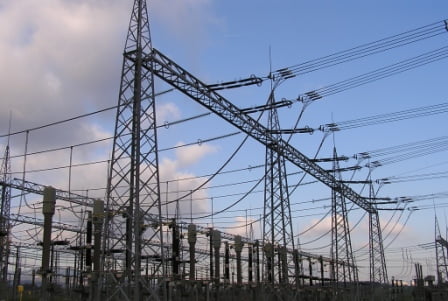As a part of Modi government’s scheme of village electrification, Deendayal Upadhyaya Gram Jyoti Yojana (DDUGJY), which has targeted universal access to electricity to be accomplished by March, 2017, Odisha government has released reports of having completed electrification in around 45,236 villages.
A village is considered to be electrified if at least ten per cent of homes have power supply including all common or public areas such as schools and clinics.
The DDUGJY, a flagship programme of the Union Ministry of Power for 24×7 supply facilitation of electricity, focuses on feeder separation (rural households and agricultural) and strengthening of sub-transmission and distribution infrastructure, including metering at all levels in rural areas.

Energy Secretary R.K. Verma said, “Of 47,677 villages in the state as per the 2011 census, around 45,236 villages constituting around 96 per cent have got power connectivity by June 30. Out of the balance 2,441 villages, 541 have been identified as uninhabited villages. Detailed action plan has been prepared to cover rest of the villages”.
Agencies like PGCIL, OPTCL, OREDA and NTPC had been distributed the work of attaining total electrification in villages.
It is interesting to note that when this scheme was launched Odisha had the highest number of villages without electricity in the country, and Prime Minister Narendra Modi asked Odisha Chief Minister Naveen Patnaik to understand the urgency of the matter.
Modi in his Independence Day speech in 2015 also made a commitment that country would achieve total electrification of villages in 1000 days. But, Odisha Government has targeted to finish it by November 2016.
According to an official, completion of electrification of 275 villages by November this year has been aimed by Odisha Renewable Energy Development Agency (OREDA). Out of this, 198 villages would be connected through micro-grid, and 76 would be covered through stand-alone solar projects.

REALITY OR JUST MISLEADING STATISTICS?
While this seems to be the statistics provided by the Odisha government, we do not know if this condition is just in the books or if these are real, legit numbers.
In March 2016, The Hindu reported that “the Centre’s claims to have electrified more than 7,000 of the estimated 18,452 unelectrified villages in the last financial year were vastly exaggerated”. Upon verification it was noted that a lot of villages that were included in the list of villages to be electrified, already had power supply, which further indicated that the Centre’s numbers were mostly “overestimated”.
The launch of an app GARV claimed to provide transparency in the electrification process, where people could track the progress in their region. But, even the information provided in this app was forged. 309 Gram Vidyut Abhiyantas (GVAs) were in-charge of entering the data on the app.
But, the reality was largely contrasted from these numbers, as a GVA reported that though power lines were laid in two villages in Madhya Pradesh, work could not start as they were stolen, but even these villages are wrongly included as electrified.
While, this is just one instance, reports have shown that even the UPA government’s statistics were misleading.
We certainly hope that this “miscalculation” or “overestimation” is not the case in Odisha, and the stats are a true indicator of rural growth.
If you liked reading this, take a look at:

































